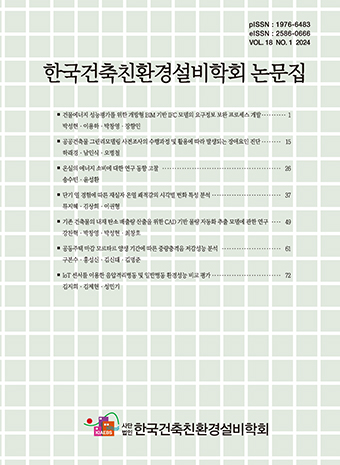Research Article
Abstract
References
Information
Gauthier, S., Bourikas, L., Al-Atrash, F., Bae, C., Chun, C., de Dear, R., Hellwig, R.T., Kim, J., Kwon, S., Mora, R., Pandya, H., Rawal, R., Tartarini, F., Upadhyay, R., Wagner, A. (2020). The colours of comfort: From thermal sensation to person-centric thermal zones for adaptive building strategies. Energy and Buildings, 216, 109936.
10.1016/j.enbuild.2020.109936
- Publisher :Korean Institute of Architectural Sustainable Environment and Building Systems
- Publisher(Ko) :한국건축친환경설비학회
- Journal Title :Journal of Korean Institute of Architectural Sustainable Environment and Building Systems
- Journal Title(Ko) :한국건축친환경설비학회논문집
- Volume : 16
- No :3
- Pages :206-218
- Received Date : 2022-05-09
- Revised Date : 2022-06-27
- Accepted Date : 2022-06-29
- DOI :https://doi.org/10.22696/jkiaebs.20220018




 Journal of Korean Institute of Architectural Sustainable Environment and Building Systems
Journal of Korean Institute of Architectural Sustainable Environment and Building Systems








